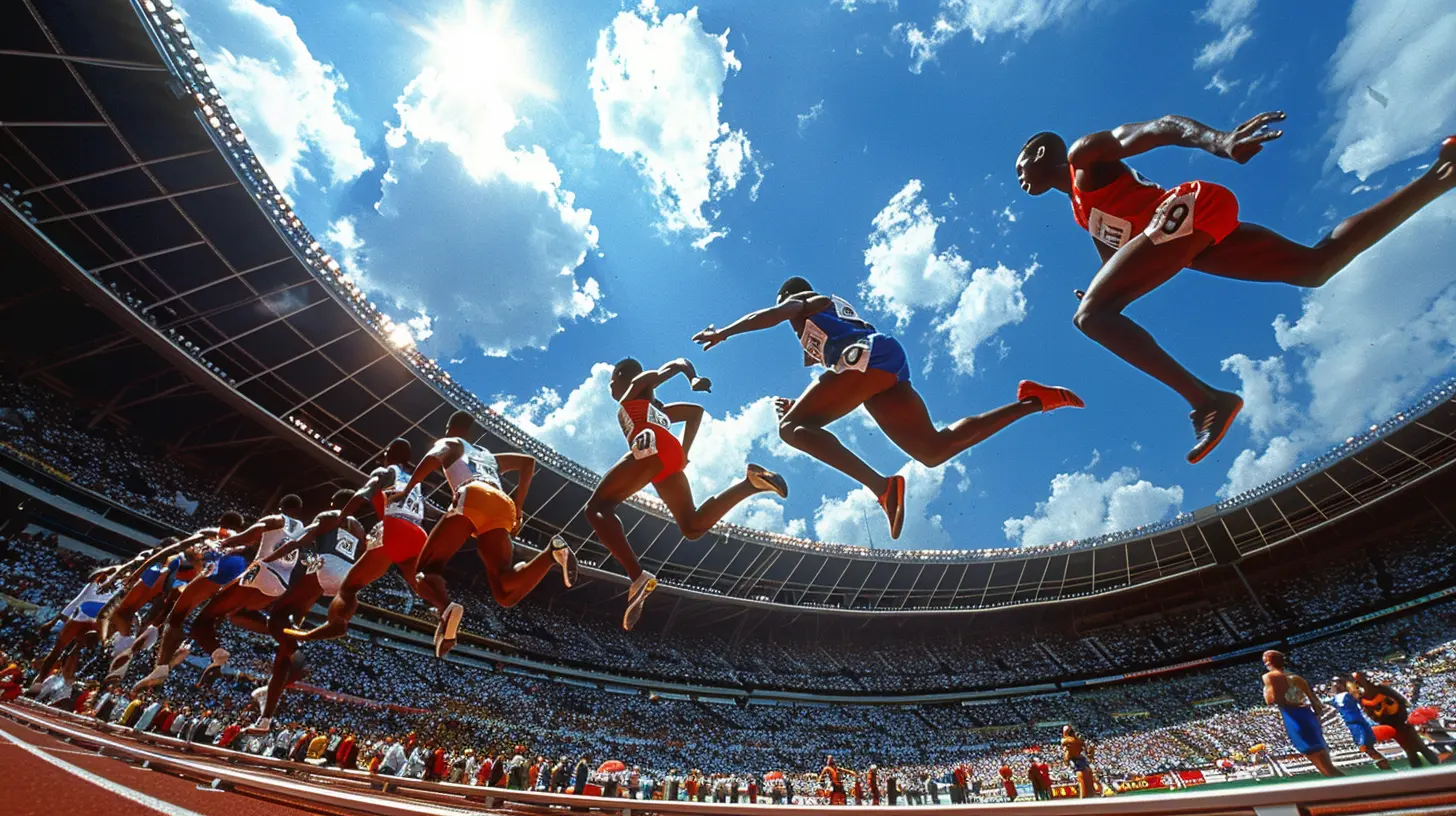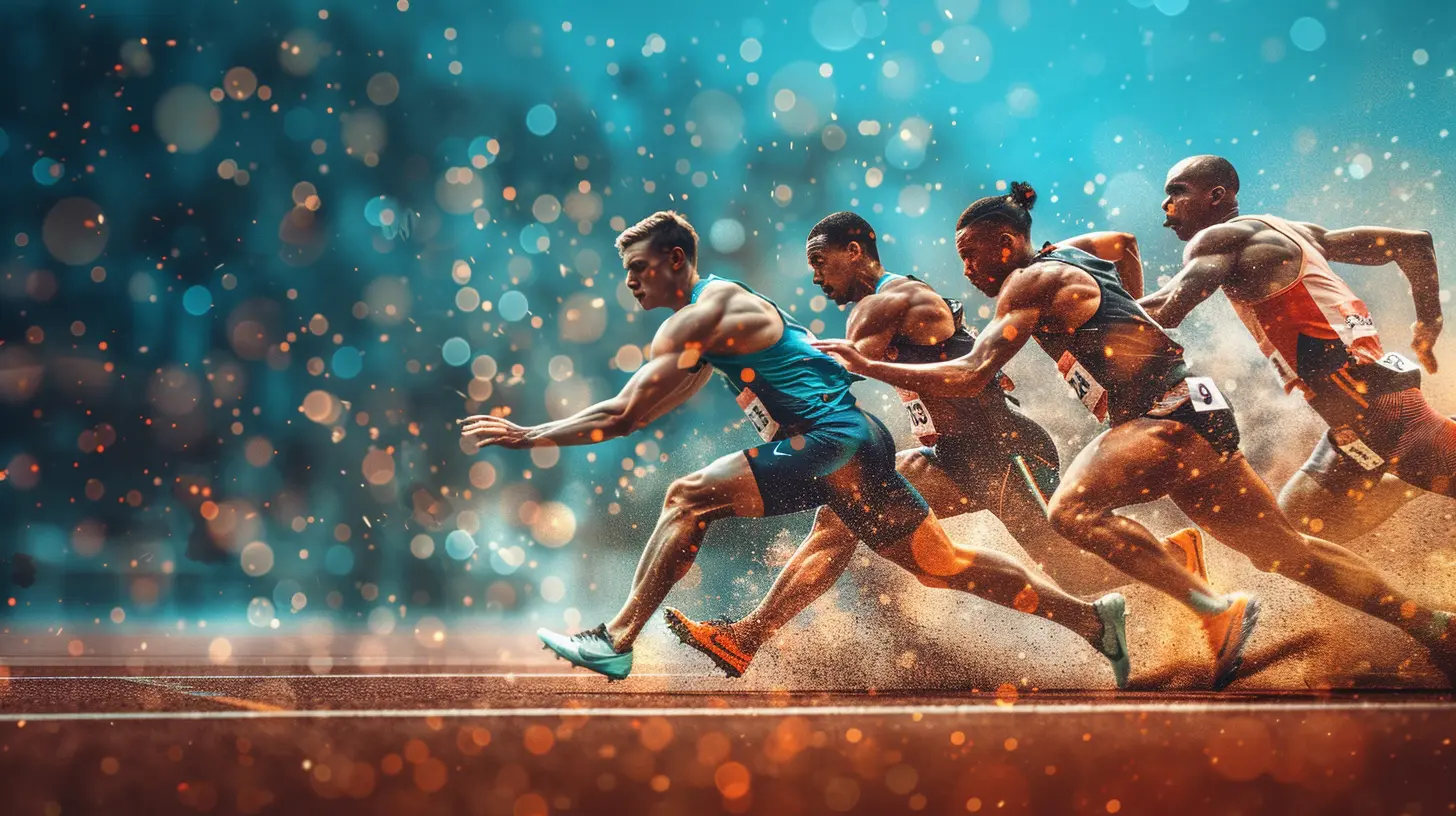Jump Higher, Run Faster: The Evolution of Athletic Records
18 June 2025
Athletes are constantly pushing the boundaries of human performance. Every decade, new records are set, old ones are shattered, and what once seemed impossible becomes the new standard. But why do athletes keep getting faster, stronger, and more explosive? Is it better training, advanced technology, or sheer human will?
In this article, we'll dive into the evolution of athletic records, the factors driving these improvements, and what the future holds for sports performance. 
The Early Days: How It All Began
Athletic competition dates back thousands of years, from the ancient Olympics in Greece to local footraces between warriors. Back then, there were no high-tech shoes, synthetic tracks, or sports science. Athletes relied solely on natural ability, rudimentary training, and sheer determination.For instance, the first officially recorded Olympic 100-meter dash time (by Thomas Burke in 1896) was 12.0 seconds. Today, elite sprinters run it in under 10 seconds. So, what changed? 
The Role of Better Training and Nutrition
Scientific Training Methods
One of the most significant reasons for the evolution of athletic records is the improvement in training techniques. Back in the day, training was mostly about repetition—run more, jump more, lift more. Today, it's all about efficiency.Athletes now have access to sports science, biomechanics, and specialized coaches who break down every movement to improve efficiency. Strength training, plyometrics, and explosive drills specifically designed to enhance power and speed have become a game-changer.
Sports Nutrition: Fueling Performance
Food is fuel, and modern athletes understand that better than ever. In the past, diets were mostly based on whatever was available. Today, sports nutritionists create tailored meal plans focusing on protein intake, hydration, and recovery. Supplements, energy drinks, and advanced hydration strategies help optimize performance. Even something as simple as timing meals correctly can make a difference in competition.
The Impact of Technology on Athletic Performance
Advancements in Footwear and Gear
Ever noticed how modern shoes seem lighter, springier, and more responsive? Companies like Nike and Adidas are pouring millions into developing high-performance footwear that gives athletes an edge.Take Eliud Kipchoge’s sub-two-hour marathon in 2019. He wore Nike’s Vaporfly shoes, which had carbon-fiber plates designed to improve running economy. Critics even debated whether the shoes gave him an unfair advantage!
Beyond shoes, modern tracks are designed for speed, with synthetic materials that enhance grip and minimize resistance. High-tech compression clothing improves circulation and reduces muscle fatigue. Every little detail matters when it comes to breaking records.
The Rise of Wearable Technology
Athletes today train smarter, not harder. With wearable tech like GPS trackers, heart rate monitors, and motion analysis software, athletes can fine-tune their training based on real-time data. These tools help them optimize speed, endurance, and recovery, ensuring peak performance when it matters most.For instance, runners can now measure stride length, cadence, and ground contact time to make micro-adjustments that shave milliseconds off their race times. 
Breaking Psychological Barriers
Mindset and Mental Conditioning
Physical ability is only half the battle. Breaking records also requires breaking mental barriers. The perfect example? The four-minute mile.For decades, scientists claimed it was physically impossible for a human to run a mile in under four minutes. Then, in 1954, Roger Bannister did just that. Once he broke the barrier, others followed suit almost immediately.
This proves that sometimes, the biggest limitation isn’t the body—it’s the mind. Today, sports psychologists play a crucial role in athletic performance, helping athletes visualize success, build confidence, and develop mental toughness.
The Role of Competition
When one athlete raises the bar, others are forced to step up. Take Usain Bolt. When he set the 100-meter world record of 9.58 seconds, suddenly, every elite sprinter aimed to match or beat him.Competition fuels progress, and rivalries push athletes to new heights. This cycle of breaking and resetting records will likely never stop.
The Future of Athletic Records
So, what’s next? How much faster, stronger, and more explosive can athletes get?Genetic Engineering and Performance Enhancement
With advancements in genetic research, some experts believe we could see athletes with genes specifically selected for strength, endurance, and speed. While this raises ethical questions, the possibility of genetically enhanced performance is on the horizon.Biomechanical Innovation
New strides in biomechanics could lead to even more efficient techniques. Could sprinters develop a perfect stride pattern that allows for sub-9-second 100-meter dashes? Could high jumpers refine their form to clear heights never before imagined? The potential is limitless.Environmental and Climate Adaptation
With climate change affecting everything from oxygen levels to humidity, some scientists predict that future athletes may adapt physically to withstand extreme conditions. Higher altitudes, hotter climates, and varying air pressures could all influence future performances.Conclusion
Athletes will always chase records. Whether it’s running faster, jumping higher, or lifting heavier, human potential knows no bounds. Thanks to better training, sports science, technology, and the power of the human mind, we are witnessing the greatest era of athletic performance ever—and the best is yet to come.One thing is certain: the limits of human performance are constantly being rewritten. Who knows where the next record-breaking moment will come from? But when it does, one thing is for sure—it’ll be spectacular.
all images in this post were generated using AI tools
Category:
Record BreakersAuthor:

Onyx Frye
Discussion
rate this article
2 comments
John McInnes
As we celebrate the relentless pursuit of athletic excellence, we must ponder: are we merely transcending human limits, or are we redefining the essence of what it means to be human in our quest for greatness?
November 19, 2025 at 5:47 AM

Onyx Frye
Thank you for your thought-provoking comment! It raises important questions about the relationship between human potential and the evolving standards of athletic achievement.
Thalor Black
Who knew that jumping higher and running faster could be such a wild ride? It's like watching superheroes in spandex! Can’t wait to see how high they’ll fly and how quickly they'll dash next—bring on the record-breaking antics!" 🏃♂️🏅✨
June 18, 2025 at 3:28 AM

Onyx Frye
Absolutely! It’s amazing to witness the incredible feats athletes achieve—truly superhero-like! Exciting times ahead for breaking records! 🏆✨


